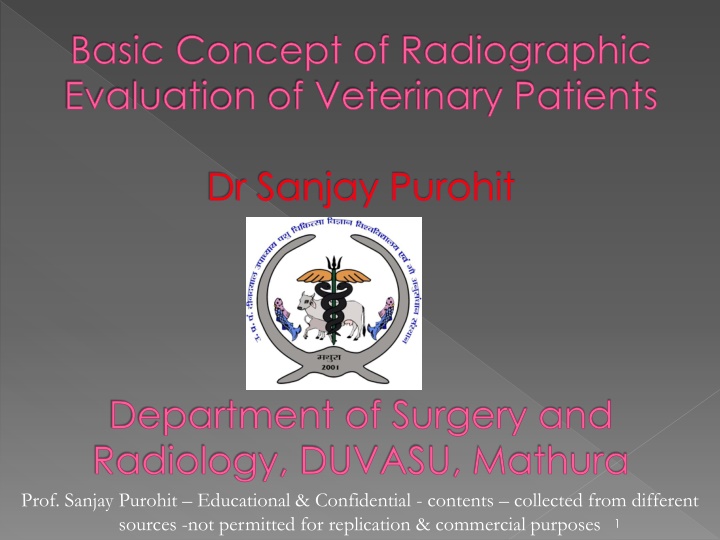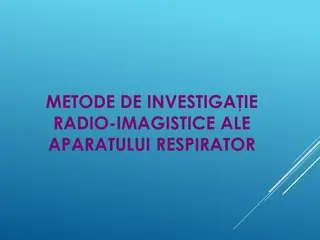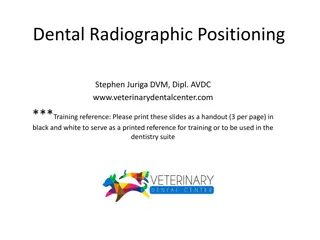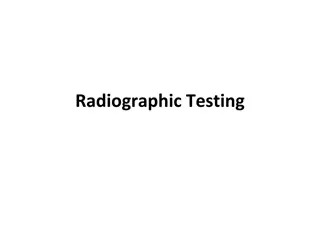
Radiographic Evaluation of Veterinary Patients: Understanding Key Concepts
Explore the fundamental concepts of radiographic evaluation in veterinary patients, including shadowgraph formation, X-ray production, radiographic opacities, and standard views. Learn about radiologic changes, factors influencing image detail, and the importance of proper film marking. Follow a structured approach to radiographic evaluation involving case history, physical examination, and detailed radiographic procedures.
Download Presentation

Please find below an Image/Link to download the presentation.
The content on the website is provided AS IS for your information and personal use only. It may not be sold, licensed, or shared on other websites without obtaining consent from the author. If you encounter any issues during the download, it is possible that the publisher has removed the file from their server.
You are allowed to download the files provided on this website for personal or commercial use, subject to the condition that they are used lawfully. All files are the property of their respective owners.
The content on the website is provided AS IS for your information and personal use only. It may not be sold, licensed, or shared on other websites without obtaining consent from the author.
E N D
Presentation Transcript
Basic Concept of Radiographic Evaluation of Veterinary Patients Dr Sanjay Purohit Department of Surgery and Radiology, DUVASU, Mathura Prof. Sanjay Purohit Educational & Confidential - contents collected from different sources -not permitted for replication & commercial purposes 1
Radiograph shadowgraph ..geometric rules applicable to the formation of shadows are also valid for radiographs. Outlines an object in only two planes, at least two views, made at right angles to one another (orthogonal views), are required to demonstrate the object in a three-dimensional representation 2
X-ray production High energy electrons, accelerated by thousands of kilovolts of potential, interact with a metal target in an x-ray tube. 3
X-rays Frequencies: >3 x 1016 Hz. Wavelengths: <10 nm. Quantum energies: >124 eV. 4
Five radiographic opacities can be recognized: 1. Metal .. .Bright white 2. Bone or mineral . White 3. Fluid or soft tissue Grey 4. Fat. ..Darker grey 5. Gas (air) .. Black 5
RADIOLOGIC CHANGES Changes in outline. Changes in position. Changes in opacity 6
Factors affecting image detail: Motion Film speed Focal spot size Focal spot-film distance Object-film distance Intensifying screens Grids Distortion 8
Film Marking: A.White ink: B.Lead Marking About: Radiographic View Body part Place Date Age Sex etc 10
Radiographic evaluation: Step 1: Case History Step 2: Physical examination Step 3: Correct Radiographic procedure; Two views Step 4: Location of Lesion: Knowledge of anatomy Basic Roentgen signs of pathology Size Architecture Contour Density Position Function 11
Lesions Which can be diagnosed Radiographically 1. Developmental 2.Metabolic 3.Traumatic 4.Infectious 5.Neoplastic 6.Degenerative Radiographic finding must be interpreted in term of anatomy, physiology and pathology 12
Thanks 14






















